APA107 is a type ic for the three-color RGB Diming control strip and string ,This ic using the CMOS process to provide three-color RGB LED output driver to adjust the output with 256 gray scale and 32 brightness adjustment, APA107 with 2 signal output way, one is clock,another is data, the clock and data is synchronizated, so that the crystal cascade piece of output movement is sychronizated .
Feature
CMOS process,low voltage ,low consumption
Synchronization of two-lane
Choose positive output or negative RGB three-color LED output
8 bit(256 level) color set ,5bit(32 level) brightness adjustment
Build-20ma constant current output
With self-detection signal build in support for continuous oscillation PWM
output ,can be maintained static screen
Application
LED lamp
LED Strip ,led pixel module
LED billboard LED screen
PRODUCT SPECIFICATIONS


PIN Description
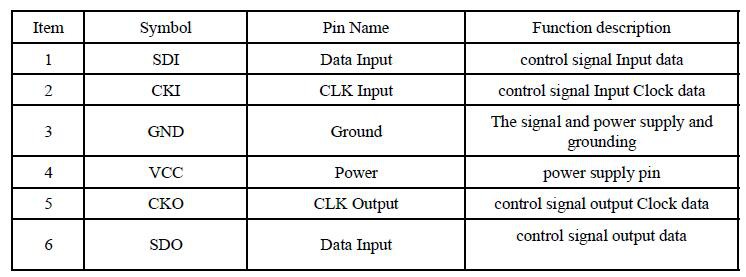
General information
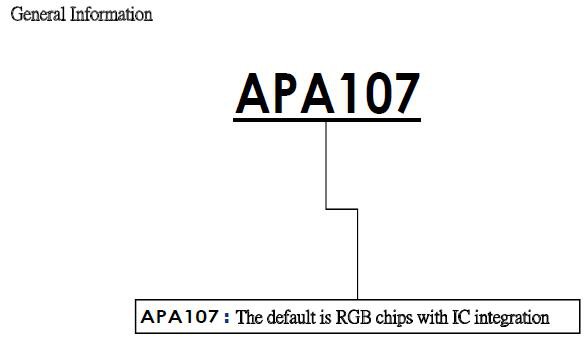
Application Circuit

Block diagram
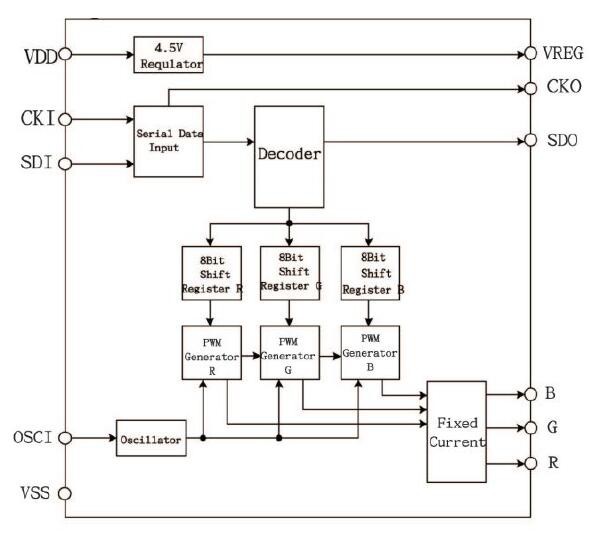
(Absolute Maximum Rating)
Supply volage -------------- -0.3-6.0V
Input voltage---------------- VSS-0.3 to VDD +0.3V
Operating temperature---------------- -40 to +70℃
Storage temperature------------------- -50 to +125℃
Note: Stress above those listed may cause permanent damage to thedevices
Absolute Maximum Ratings(Ta=25℃,VSS=0V) :

The electrical parameters (unless otherwise specified, TA=-20 ~ +70 ℃, VDD=4.5 ~ 5.5V,
VSS=0V):
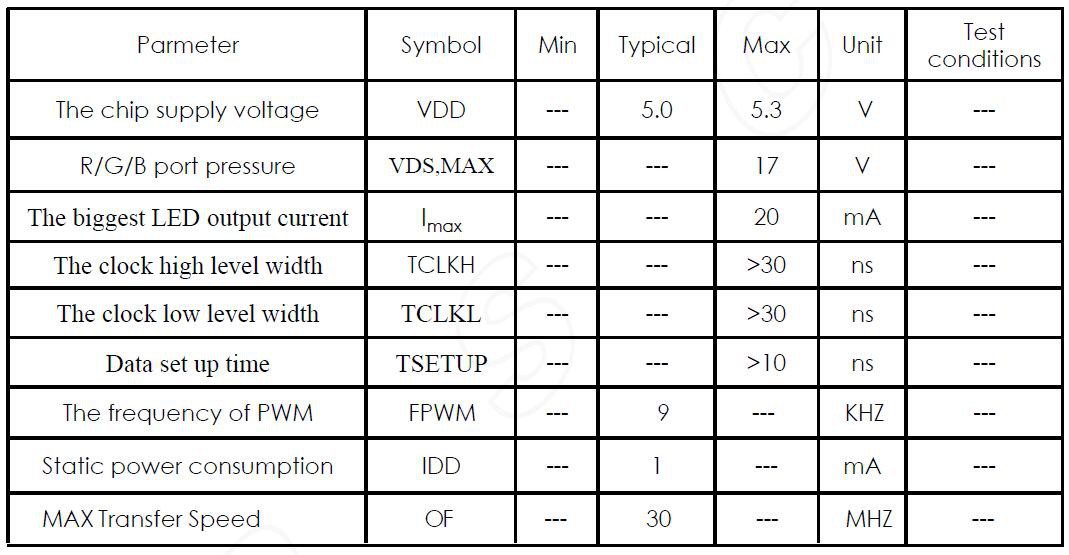
Feature Descriptions:
(1) Series data structure
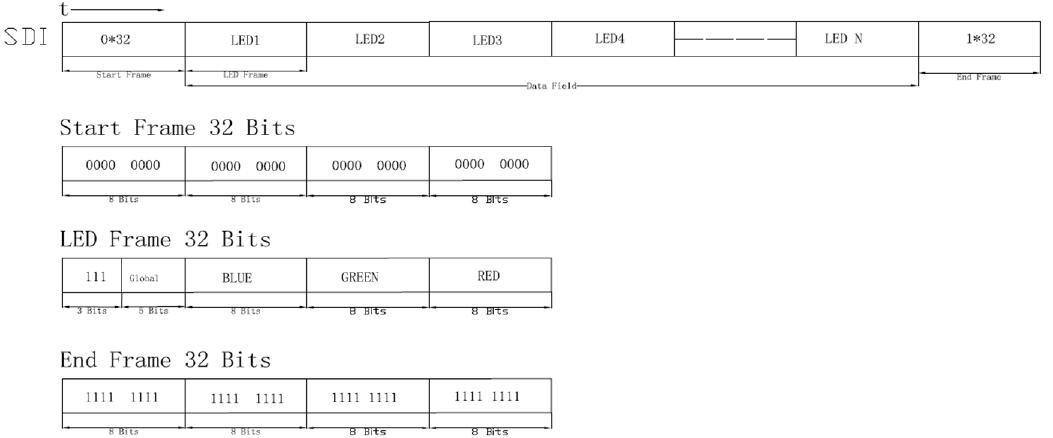
Global bit:5 bit (32 level) brightness setting,while controlling R,G,B three-color
constant current output value,if set the global bit for the 10000( 16/31 ) is the output
current is half again the original PWM settings

PWM input and output signals Relations

(2). The number of pixel per second sent to the CKI frequency (FCKI) minus the Start
Frame bit divided by the number 40 the number of LED Frame bit 32, if the CKI
frequency(FCKI) to 512KHZ. The pixel number (512000-40)/32=15998, if the 50
second update Views can be connected in series LED number 15998/50=319. To
increase the number of cascaded IC CKI frequency
(3).POLAR to empty ,R,G,B for the negative output;POLAR access VSS ,R,G,B is
positive output
(4).VEN: self-detection
DATA field to the middle of 3 bit is B,G,R in the MSB of the opposite
phase,otherwise regarded as invalid data. VEN close to the empty when the
self-detection; when VEN VSS then activated self-detection
(5).CSEL to empty when the CKO and CKI,RP:CSEL connected with VSS when the
Package
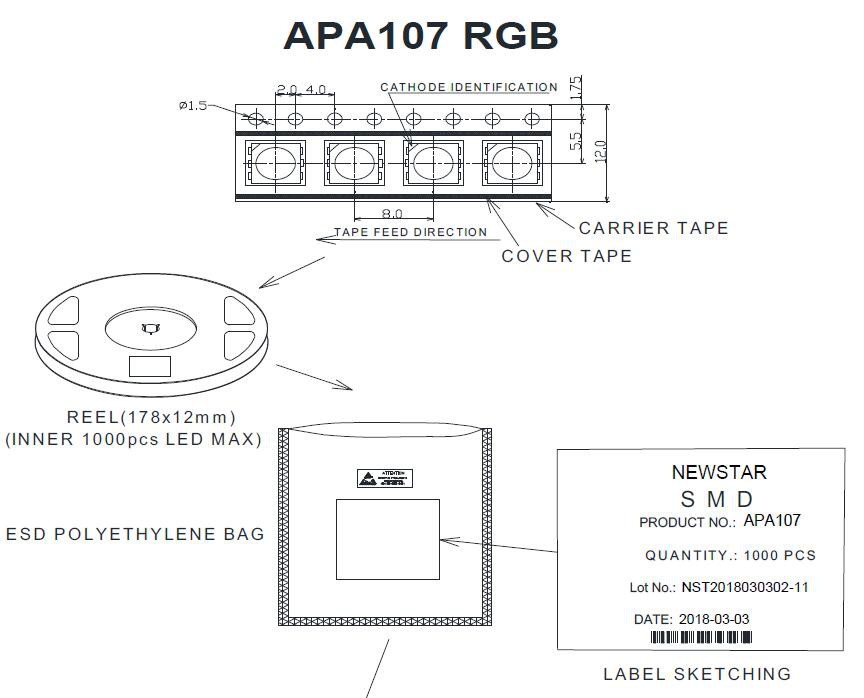
 Steve Michel
Steve Michel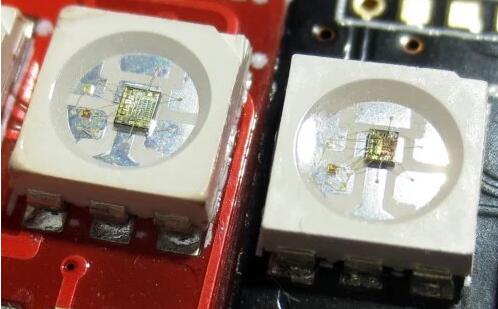


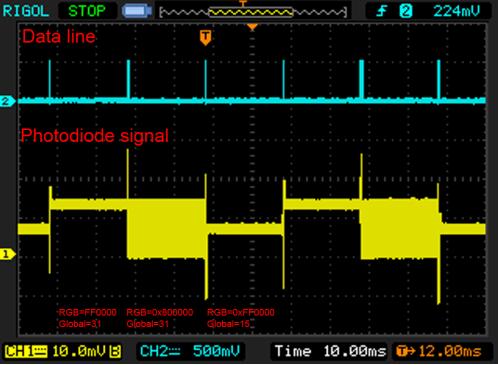
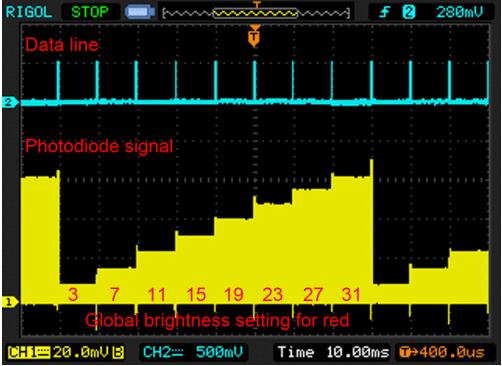
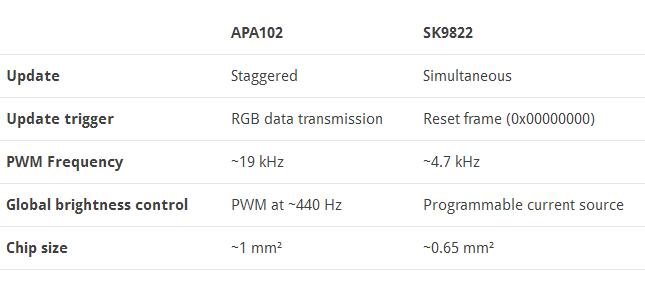

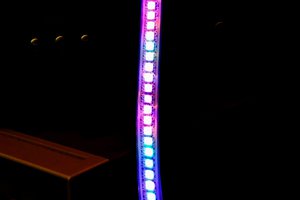
 Bruce Land
Bruce Land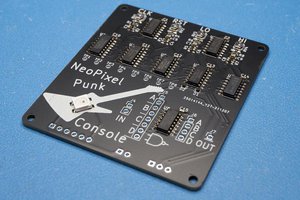
 Adrian Studer
Adrian Studer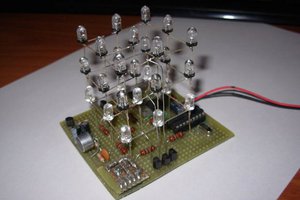
 gianlucag
gianlucag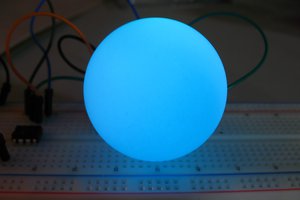
Friendly Reminder:
The upgrade of APA107 LED chip named "NS107S", NS107S RGB/White LED chip.
NS means Newstar. If you search APA107 LED, you could know Newstar is the original factory. If you need APA107 White/RGB LED chip or NS107S White/RGB LED chip, please contact Newstar or their distributor.
Newstar will also present APA107-2020, NS107S-3535, NS107S-2020...and many new pixel led chip in the near future.
Warning: Other xx107S, maybe SK9822 or APA102C, or other counterfeit and shoddy products.
And Newstar also produce SK and WS serious pixel LED chip with higher brightness and more stable.